How to grow Magnolias
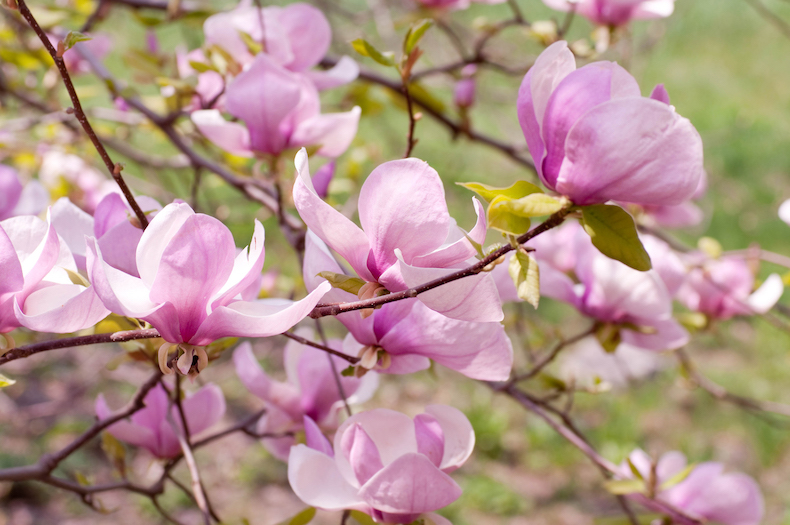
Magnolia 'George Henry Kern' is one of the most stunning varieties you can grow
Image: Thompson & Morgan
A well grown Magnolia is a sight to behold, becoming more impressive with maturity. The introduction of so many new varieties from New Zealand and America, is sure to bring about renewed interest in this noble plant family.
As a plant group, Magnolias are diverse, ranging from small shrubs to large spreading trees. Recent breeding has produced fabulous new hybrids from grafts and cuttings, which will flower reliably, at a much earlier age than older, seed raised cultivars. With so many to choose from, there is a Magnolia to suit almost any size of garden. You can choose between growing Magnolias in a pot or straight into the ground.
Deciduous Magnolias are the monarchs of spring! Their large, showy blooms create a breath taking spectacle that can be seen in gardens up and down the country.
These majestic shrubs and trees bloom early, often before the foliage breaks bud, bringing a welcome splash of colour to the garden after the dark winter months. The goblet or star-shaped flowers flutter in the spring breeze, glowing beautifully in the bright spring sunshine.
Evergreen Magnolias, such as M. grandiflora, flower later, from summer to autumn, against a backdrop of handsome, glossy foliage. They make imposing specimen plants - particularly impressive when trained as a wall shrub!
Take a look at our extensive range to buy your Magnolias online. Read on to learn how to get the very best from your Magnolia plants.
Choose the right Magnolia for your garden
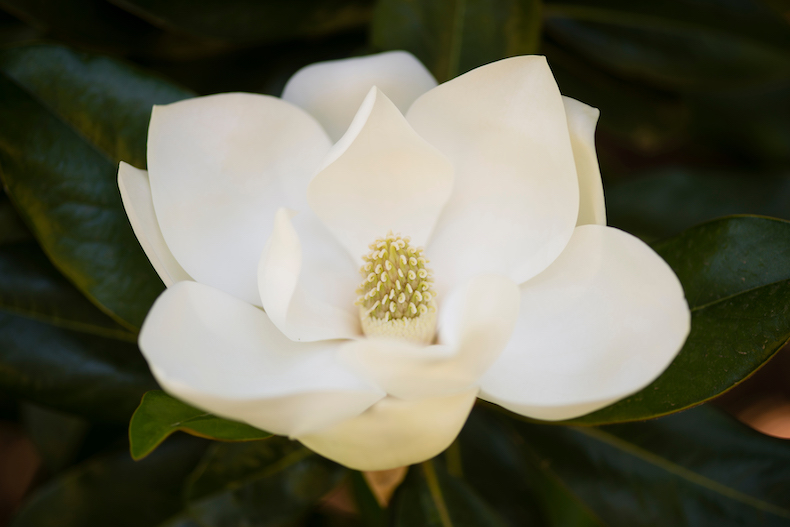
Magnolia grandiflora 'Alta' is a glossy-leaved evergreen variety
Image: Thompson & Morgan
Magnolia to grow by warm, sheltered walls:
- Magnolia grandiflora (pictured above)
Magnolia for containers:
- Magnolia stellata ‘Royal Star’
- Magnolia denudata ‘Sunrise’ (patio standard)
- Magnolia ‘George Henry Kern’
- Magnolia x loebneri 'Mag's Pirouette'
Magnolia for small gardens:
Specimen trees and large shrubs:
Late flowering magnolia varieties:
Early flowering magnolia:
Magnolia for slightly alkaline soil:
Bareroot vs. potted Magnolias
Magnolias may be supplied as bareroot or potted plants. How they are supplied will make no difference to their subsequent performance in your garden.
Take care to plant them at the same depth that they were originally growing. This is easy to see with a potted plant, but it can be less obvious with bareroot plants. However, a soil mark is usually apparent at the base of the main stem, which acts as a good indicator.
Where to grow Magnolias
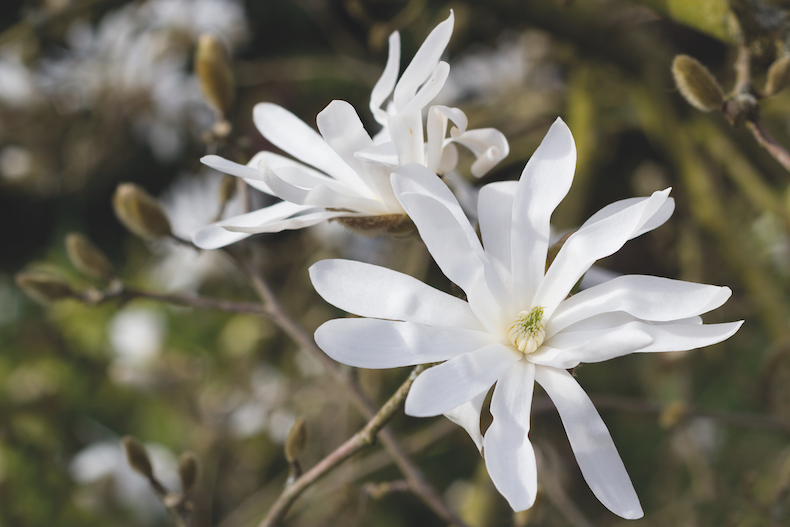
Magnolia stellata is a hardy shrub that can grow in a wide range of soil types
Image: Thompson & Morgan
Site
Like any early flowering plant, there is a risk that frost may damage the blooms. This risk can be minimised by growing Magnolias in a sunny or semi shaded spot, with protection from strong winds and hard spring frosts. In cold areas and frost pockets, choose a variety that will flower later in the spring when most frosts have passed. Be sure to give them sufficient space to reach their full potential. Plants that must compete for light and space will never truly thrive.
Soil
Magnolias prefer a moist, well-drained soil which is rich in organic matter, so it is well worth adding some well-rotted manure or compost to the planting hole, mixing it thoroughly and deeply.
Most magnolias will thrive on a neutral or slightly acid soil, with a pH of around 5.5 – 6.5. Chalky soils can be trickier, but some species such as Magnolia stellata and Magnolia soulangeana will cope nicely, making a worthwhile display.
Growing Magnolias in Containers
Some varieties of Magnolia are small enough to be grown as a container plant. When growing Magnolias in patio pots, use a blend of ericaceous compost mixed with John Innes No. 3.
You can watch our expert in-house gardener, Sue Sanderson, planting a Magnolia in this short video:
Magnolia aftercare
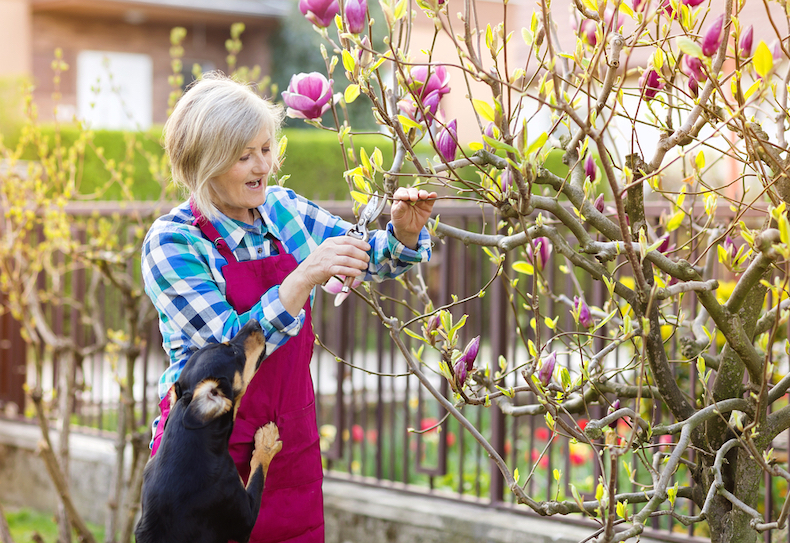
Pruning is just one of the ways to look after your magnolia
Image: Halfpoint/Shutterstock
Water
After planting, it is advisable to water Magnolia plants regularly throughout their first few growing seasons until they are fully established.
Mulch
In spring, apply a mulch of well-rotted bark chips, garden compost or manure to the base of the plant, taking care not to mound it up around the stem. Regular mulching will help to maintain a rich soil and also conserve moisture around the shallow roots.
Pruning
Magnolias require little pruning other than to maintain their shape and remove damaged or crossing stems. For deciduous species, this is best undertaken from June to September to avoid the stems bleeding sap. Where tall, upright water shoots appear, these should be removed to preserve the shape and vigour of the plant.
Evergreen varieties should be pruned in summer, or if flower buds are present, prune them immediately after flowering.
Magnolia problems
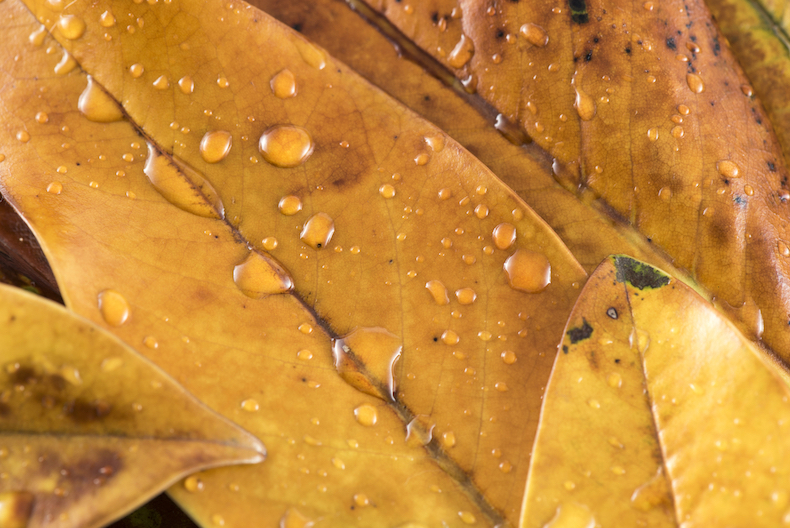
Yellowing foliage is often a sign of over-alkaline soil
Image: Halfpoint/Shutterstock
No flowers
Be patient! It may take Magnolias several years to begin flower after planting, but they are well worth the wait. Avoid pruning unless necessary as this can inhibit flowering.
Blackened flowers and buds
Frost damage can spoil the flowers and buds of early flowering species. Take care to choose a sheltered position when planting.
Yellowing foliage
Sickly looking yellow foliage is generally caused by alkaline soil. Choose varieties that cope better with alkalinity.
Leaf drop
Evergreen varieties are prone to leaf drop every few years. This is a natural part of their renewal but may look dramatic during these ‘shedding’ periods!
Ring barking
Magnolias are particularly attractive to rabbits and therefore susceptible to ring barking. Install a spiral tree guard to protect the stem immediately after planting.
We hope this article has been helpful, and has given you all the information you need to successfully grow and care for magnolias - no matter the size of your garden! If you're looking for more information on growing magnolias, visit our comprehensive hub page.
Sign Up For Exclusive Special Offers




© 2024 Thompson & Morgan. All rights reserved. A division of Branded Garden Products Limited.
Sign up for exclusive offers!



